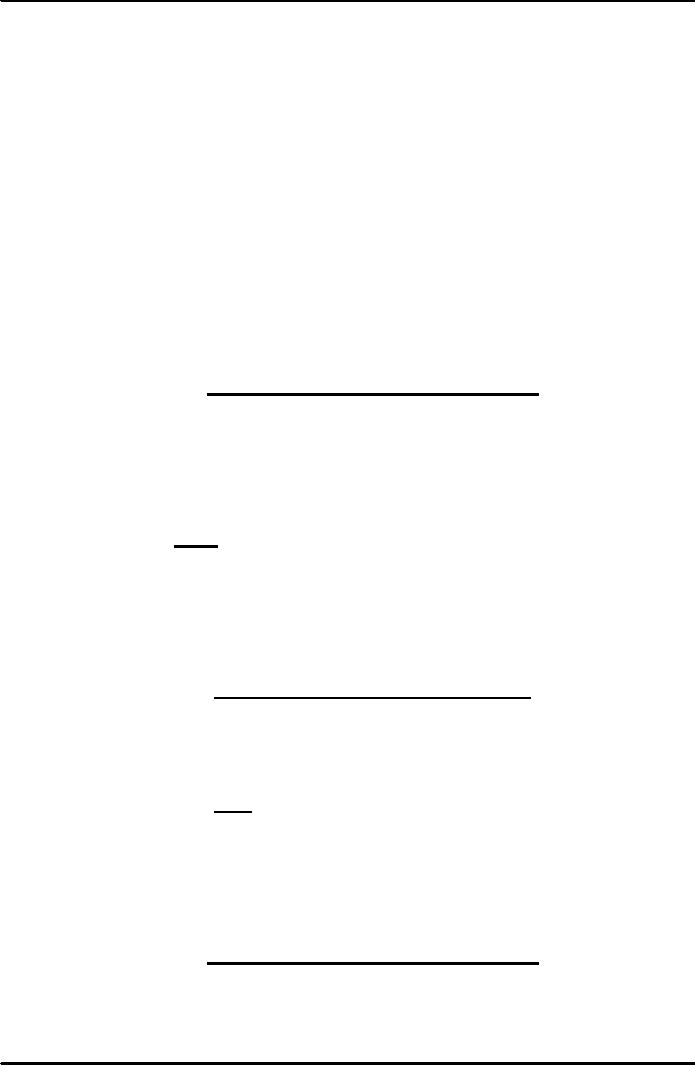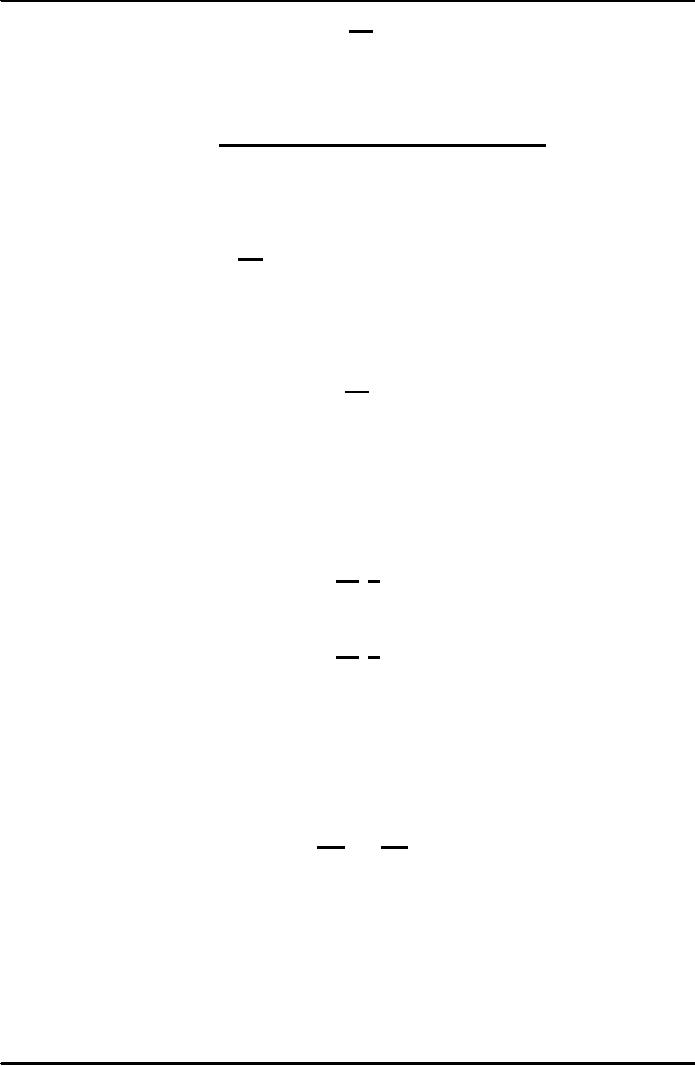 |
ELASTICITIES:Price Elasticity of Demand, Point Elasticity, Arc Elasticity |
| << DEMAND, SUPPLY AND EQUILIBRIUM (CONTINUED……..):Equilibrium |
| ELASTICITIES (CONTINUED………….):Total revenue and Elasticity >> |

Introduction
to Economics ECO401
VU
UNIT
- 3
Lesson
3.1
ELASTICITIES
Elasticity
is a term widely used in
economics to denote the
"responsiveness of one variable
to
changes
in another."
Types
of Elasticity:
There
are four major types of
elasticity:
·
Price
Elasticity of Demand.
·
Price
Elasticity of Supply.
·
Income
Elasticity of Demand.
·
Cross-Price
Elasticity of Demand.
Price
Elasticity of Demand:
Price
elasticity of demand is the
percentage change in quantity
demanded with respect to
the
percentage
change in price.
Price
elasticity of demand can be
illustrated by the following
formula:
PЄd
= Percentage change in Quantity
Demanded
Percentage
change in Price
Where
Є = Epsilon;
universal notation for
elasticity.
If,
for example, a 20% increase
in the price of a product
causes a 10% fall in the
Quantity
demanded,
the price elasticity of
demand will be:
PЄd
= - 10% = - 0.5
20%
Price
Elasticity of Supply:
Price
elasticity of supply is the
percentage change in quantity
supplied with respect to
the
percentage
change in price.
Price
elasticity of supply can be
illustrated by the following
formula:
PЄs
= Percentage change in Quantity
Supplied
Percentage
change in Price
If
a 15% rise in the price of a
product causes a 15% rise in
the quantity supplied, the
price
elasticity
of supply will be:
PЄs
= 15 % = 1
15
%
Income
Elasticity of Demand:
Income
elasticity of demand is the
percentage change in quantity
demanded with respect
to
the
percentage change in income of
the consumer.
Income
elasticity of demand can be
illustrated by the following
formula:
YЄd
= Percentage change in Quantity
Demanded
Percentage
change in Income
If
a 2% rise in the consumer's
incomes causes an 8% rise in
product's demand, then
the
income
elasticity of demand for the
product will be:
20

Introduction
to Economics ECO401
VU
YЄd
= 8% =4
2%
Cross-Price
Elasticity of Demand:
Cross
price elasticity of demand is
the percentage change in
quantity demanded of a
specific
good,
with respect to the
percentage change in the
price of another related
good.
PbЄda
= Percentage change in Demand
for good a
Percentage
change in Price of good
b
If,
for example, the demand
for butter rose by 2% when
the price of margarine rose
by 8%,
then
the cross price elasticity
of demand of butter with
respect to the price of
margarine will be.
PbЄda
= 2% = 0.25
8%
If,
on the other hand, the
price of bread (a compliment)
rose, the demand for
butter would fall.
If
a 4% rise in the price of
bread led to a 3% fall in
the demand for butter,
the cross-price
elasticity
of demand for butter with
respect to bread would
be:
PbЄda
= - 3% = - 0.75
4%
Point
Elasticity:
Point
elasticity is used when the
change in price is very
small, i.e. the two
points between
which
elasticity is being measured
essentially collapse on each
other. Differential calculus
is
used
to calculate the instantaneous
rate of change of quantity
with respect to changes in
price
(dQ/dP)
and then this is multiplied
by P/Q, where P and Q are
the price and quantity
obtaining
at
the point of interest. The
formula for point elasticity
can be illustrated
as:
Є=ĆQxP
ĆPQ
Or
this formula can also be
written as:
Є=dQxP
dPQ
Where
d = infinitely small change in
price.
Arc
Elasticity:
Arc
elasticity measures the
"average" elasticity between
two points on the demand
curve. The
formula
is simply (change in quantity/change in
price)*(average price/average
quantity).
As:
Є=ĆQ ÷ ĆP
Q
P
To
measure arc elasticity we
take average values for Q
and P respectively.
21
Table of Contents:
- INTRODUCTION TO ECONOMICS:Economic Systems
- INTRODUCTION TO ECONOMICS (CONTINUED………):Opportunity Cost
- DEMAND, SUPPLY AND EQUILIBRIUM:Goods Market and Factors Market
- DEMAND, SUPPLY AND EQUILIBRIUM (CONTINUED……..)
- DEMAND, SUPPLY AND EQUILIBRIUM (CONTINUED……..):Equilibrium
- ELASTICITIES:Price Elasticity of Demand, Point Elasticity, Arc Elasticity
- ELASTICITIES (CONTINUED………….):Total revenue and Elasticity
- ELASTICITIES (CONTINUED………….):Short Run and Long Run, Incidence of Taxation
- BACKGROUND TO DEMAND/CONSUMPTION:CONSUMER BEHAVIOR
- BACKGROUND TO DEMAND/CONSUMPTION (CONTINUED…………….)
- BACKGROUND TO DEMAND/CONSUMPTION (CONTINUED…………….)The Indifference Curve Approach
- BACKGROUND TO DEMAND/CONSUMPTION (CONTINUED…………….):Normal Goods and Giffen Good
- BACKGROUND TO SUPPLY/COSTS:PRODUCTIVE THEORY
- BACKGROUND TO SUPPLY/COSTS (CONTINUED…………..):The Scale of Production
- BACKGROUND TO SUPPLY/COSTS (CONTINUED…………..):Isoquant
- BACKGROUND TO SUPPLY/COSTS (CONTINUED…………..):COSTS
- BACKGROUND TO SUPPLY/COSTS (CONTINUED…………..):REVENUES
- BACKGROUND TO SUPPLY/COSTS (CONTINUED…………..):PROFIT MAXIMISATION
- MARKET STRUCTURES:PERFECT COMPETITION, Allocative efficiency
- MARKET STRUCTURES (CONTINUED………..):MONOPOLY
- MARKET STRUCTURES (CONTINUED………..):PRICE DISCRIMINATION
- MARKET STRUCTURES (CONTINUED………..):OLIGOPOLY
- SELECTED ISSUES IN MICROECONOMICS:WELFARE ECONOMICS
- SELECTED ISSUES IN MICROECONOMICS (CONTINUED……………)
- INTRODUCTION TO MACROECONOMICS:Price Level and its Effects:
- INTRODUCTION TO MACROECONOMICS (CONTINUED………..)
- INTRODUCTION TO MACROECONOMICS (CONTINUED………..):The Monetarist School
- THE USE OF MACROECONOMIC DATA, AND THE DEFINITION AND ACCOUNTING OF NATIONAL INCOME
- THE USE OF MACROECONOMIC DATA, AND THE DEFINITION AND ACCOUNTING OF NATIONAL INCOME (CONTINUED……………..)
- MACROECONOMIC EQUILIBRIUM & VARIABLES; THE DETERMINATION OF EQUILIBRIUM INCOME
- MACROECONOMIC EQUILIBRIUM & VARIABLES; THE DETERMINATION OF EQUILIBRIUM INCOME (CONTINUED………..)
- MACROECONOMIC EQUILIBRIUM & VARIABLES; THE DETERMINATION OF EQUILIBRIUM INCOME (CONTINUED………..):The Accelerator
- THE FOUR BIG MACROECONOMIC ISSUES AND THEIR INTER-RELATIONSHIPS
- THE FOUR BIG MACROECONOMIC ISSUES AND THEIR INTER-RELATIONSHIPS (CONTINUED…….)
- THE FOUR BIG MACROECONOMIC ISSUES AND THEIR INTER-RELATIONSHIPS (CONTINUED…….):Causes of Inflation
- THE FOUR BIG MACROECONOMIC ISSUES AND THEIR INTER-RELATIONSHIPS (CONTINUED…….):BALANCE OF PAYMENTS
- THE FOUR BIG MACROECONOMIC ISSUES AND THEIR INTER-RELATIONSHIPS (CONTINUED…….):GROWTH
- THE FOUR BIG MACROECONOMIC ISSUES AND THEIR INTER-RELATIONSHIPS (CONTINUED…….):Land
- THE FOUR BIG MACROECONOMIC ISSUES AND THEIR INTER-RELATIONSHIPS (CONTINUED…….):Growth-inflation
- FISCAL POLICY AND TAXATION:Budget Deficit, Budget Surplus and Balanced Budget
- MONEY, CENTRAL BANKING AND MONETARY POLICY
- MONEY, CENTRAL BANKING AND MONETARY POLICY (CONTINUED…….)
- JOINT EQUILIBRIUM IN THE MONEY AND GOODS MARKETS: THE IS-LM FRAMEWORK
- AN INTRODUCTION TO INTERNATIONAL TRADE AND FINANCE
- PROBLEMS OF LOWER INCOME COUNTRIES:Poverty trap theories: